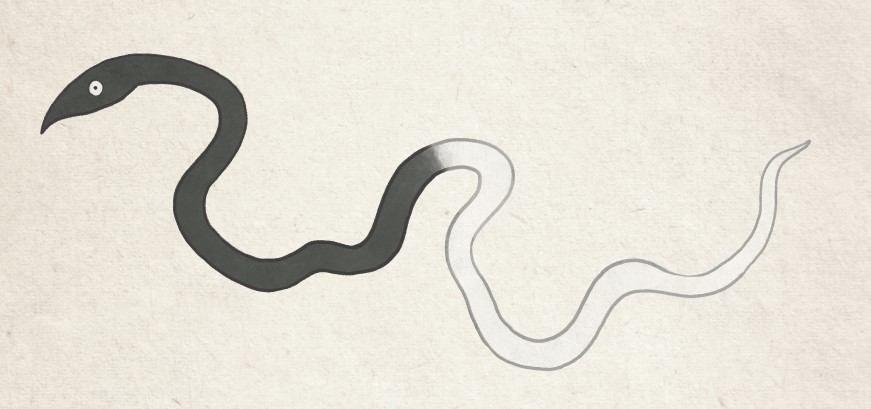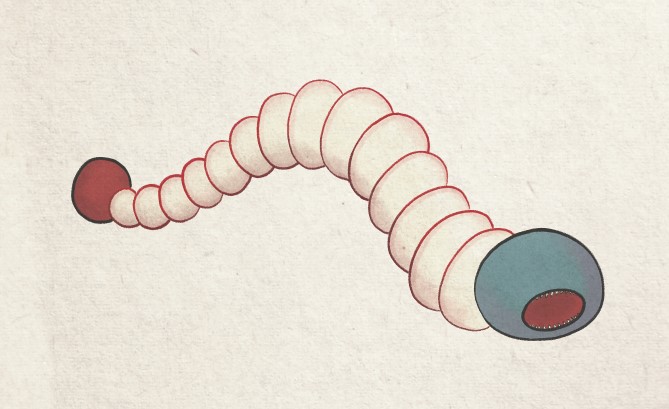If you’d like to join me and many others in painting a yokai a day this month, all you have to do is paint, draw, or create any yokai you like, and share it using the hashtag #ayokaiaday. There’s no set list of yokai you have to paint, but you’re free to browse yokai.com or any other yokai resource and choose your favorites.

Kuromushi
黒虫
Translation: black worm
The front half of a kuromushi’s body is black, while the rear half is white. They infect the kidneys.
The only symptom of a kuromushi infection listed in Harikikigaki is deafness.
They are treated with the fruit of the star anise (Illicium verum).
I have to say this yokai is the weirdest one so far this month. Not for any one feature, but for the odd combination of them that amounts to something so mundane. Overall it just seems a little random. Like they had chart with colors, symptoms, and treatments and just threw darts at it to make up a new bug.
First of all, why they are called black worms and not black-and-white worms or something along those lines is beyond me. Most of these worms have some sort of physical feature related to their symptoms, but how does a half black half white body relate to deafness?
Second, they live in the kidneys? Why there? What does that have to do with deafness? Why not the ear canal? I imagine that whoever wrote this book was working off of some real sickness, just as yesterday’s worm seemed to relate with an actual parasitic worm. What could possibly be the real-world inspiration for this mushi?
Lastly, it’s treatment is seems unrelated to the symptoms. Chinese star anise has a long history in Chinese folk remedies, and even today it is cultivated for shikimic acid–a compound used in some pharmaceuticals. However, Japanese star anise is highly toxic, and ingestion causes seizures, hallucinations, and severe inflammation of the digestive tract, urinary tract, and kidneys. Presumably your folk doctor would know the difference between Chinese and Japanese star anise, but if they didn’t, it sounds like the treatment would be worse than the disease!
If you enjoyed today’s A-Yokai-A-Day entry, please consider becoming a patron and supporting my work by visiting patreon.com/osarusan.







